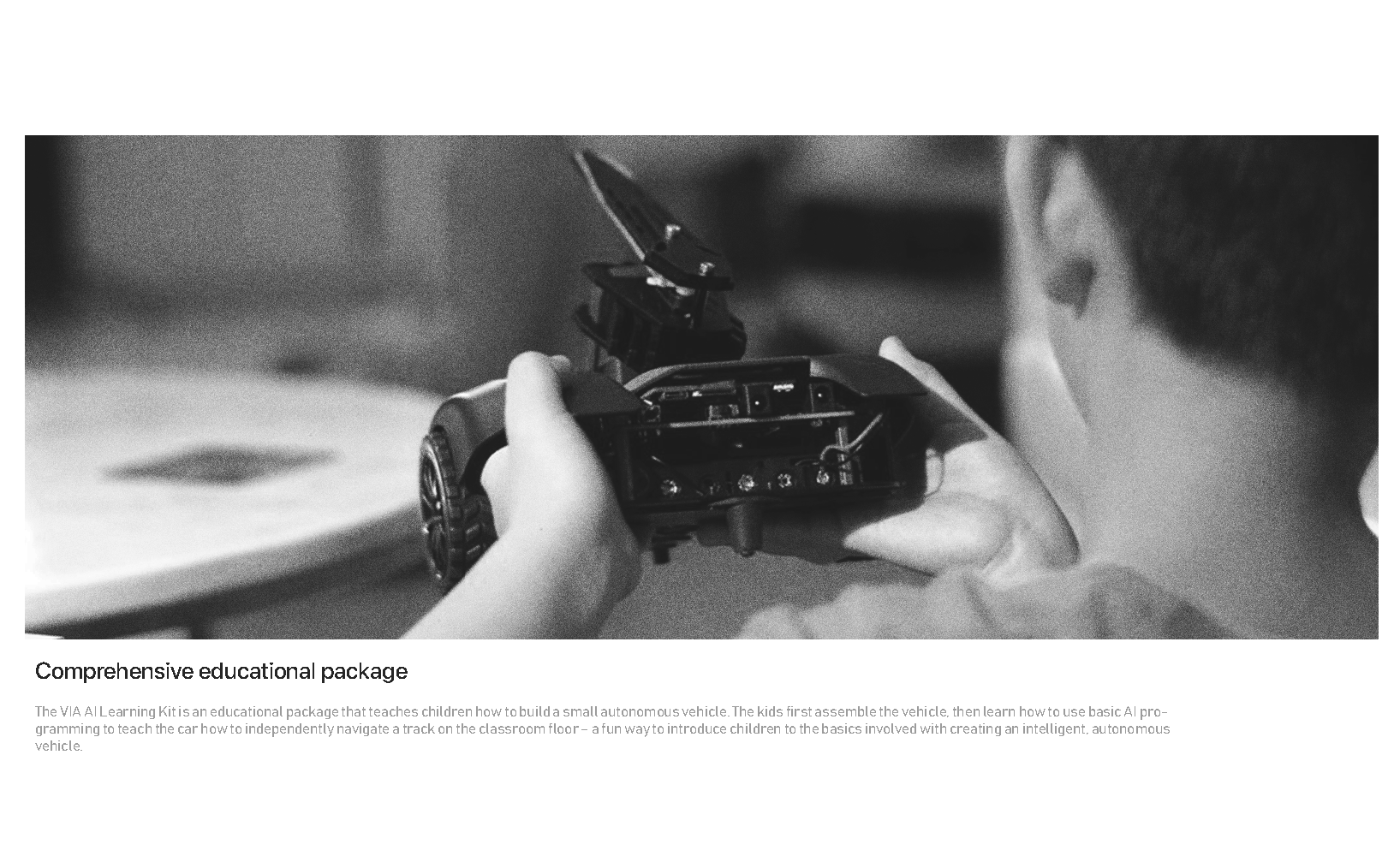VIA Ai Learning Kit
a AI Learning Car Kit lets kids build and program their own mini self-driving vehicle, introducing them to AI and robotics in a fun, interactive manner.
Project Highlight.
as the main designer of the Via AI Learning Car, I lead user behavior research and communicate with various user groups, including students, teachers, and parents, to ensure the product's alignment with their needs. Working closely with our engineering team, we've transformed these insights into an engaging educational tool that bridges the gap between theory and practice, making AI and robotics accessible to the next generation of innovators.
Timeline: Aug - Oct 2022
My Role: Project Lead, User Interview, Questionnaire, Persona, Storyboard
Team: Peter Chang, Via Ai Learning Team
Tools: SolidWorks, Fusion 360, Keyshot, Rhino
1
Discover Desktop Research User Interview
2
Define Persona User Journey Map
3
Ideate Brianstorm Value Proposition
4
Prototype Paper Wireframe Lo-fi Prototype
5
Test Usability Test Heuristics Evaluation
6
Product Lunch Hi-fi Prototype Success Metrics

Overview
The Story
The Via AI Learning Car offers an engaging and practical introduction to machine learning for developers of all skill levels. Through a cloud-based 3D racing simulator, a fully autonomous 1/18th scale race car driven by reinforcement learning, and participation in a global racing league, this project provides a unique hands-on learning experience. Reinforcement learning, an advanced machine learning technique, empowers models to acquire complex behaviors without relying on labeled training data while optimizing for long-term goals.
This project presents a fun and accessible way to delve into machine learning swiftly. It features hands-on tutorials that cover the fundamentals, allowing users to train reinforcement learning models and test them in an exciting autonomous car racing experience. The Via AI Learning Car 3D racing simulator serves as a versatile platform for experimentation, enabling exploration of various sensor inputs, the latest reinforcement learning algorithms, neural network configurations, and simulation-to-real domain transfer methods.
Reflection
In my role as a product designer, communicating with engineers across various departments has been a cornerstone of my work. This collaboration is essential, as it brings together diverse perspectives and expertise, crucial for innovation. Our dialogues are often a blend of creative brainstorming and technical problem-solving, where we balance design aesthetics with functionality.
A recent challenge we faced was the task of making a car design more compact without compromising its usability or aesthetic appeal. This required a deep dive into understanding the essentials of car design and pushing the boundaries of our creativity and technical knowledge. Working closely with engineers, we engaged in iterative discussions, exploring every aspect from material selection to component arrangement. These sessions were not just about finding a middle ground; they were about challenging each other and ourselves, striving for a design that was not only smaller but also smarter and more user-friendly.
This experience reinforced the value of cross-disciplinary collaboration and the power of challenging established norms to achieve breakthroughs in design. It's a testament to how open communication and a willingness to push beyond comfort zones can lead to innovative solutions.











